A Smart Border Wall VS Trump’s Third-Century “Dumb” Wall (#GotBitcoin?)
We have the technology to improve border security, and it would be much cheaper than a physical wall. Plus, it could be operational within a year. A Smart Border Wall VS Trump’s Third-Century “Dumb” Wall (#GotBitcoin?)
We have driverless vehicles, we can use facial recognition software as payment for goods, and outer space is the next hot commercial travel destination. Yet we continue to debate the efficacy of a third century solution to secure our nation’s southern border.
The American people are frustrated and have every right to be. The federal government should have secured our borders by now. The tools to do so are available and have existed for some time in the private sector.

I used many of them when I worked for a private intelligence firm after nearly a decade of service in the CIA. I am continuously amazed by innovations in security and surveillance technology as a member of the House committees on both Homeland Security and Intelligence. We have access to existing sensor technology that can determine the difference between a jack rabbit and a human moving across the desert. We have drones that can track individuals anywhere on the planet. But when it comes to the border, we’ve allowed an outdated, physical barrier to dominate the national dialogue and stifle innovation.
The wall will be neither big nor beautiful: Ruben Navarrette
A one-size-fits-all approach will not solve our complex border problems. While a physical barrier can be effective in urban areas, each sector of the border faces unique geographical, cultural and technological challenges that would be best addressed with a flexible, sector-by-sector approach that empowers the Border Patrol agents on the ground with the resources they need.
Of the 650 miles of existing border fencing, hundreds of miles are in need of repair because criminal organizations have cut through, dug under or plowed over it repeatedly. The drug cartels are using more modern technology than we are to breach our border, so why would we double down on an outdated tool?
What we need is a “Smart Wall” to solve our 21st century border problems. A Smart Wall would use sensor, radar and surveillance technologies to detect and track incursions across our border so we can deploy efficiently our most important resource, the men and women of Border Patrol, to perform the most difficult task — interdiction. Most of this process can be done with computer vision, artificial intelligence and machine-learning, allowing our Border Patrol agents to focus exclusively on stopping individuals and contraband from crossing our border illegally.
The recent horrific human smuggling tragedy in my hometown of San Antonio is a stark reminder that there are nine major criminal organizations operating in Mexico that have zero regard for human life. A physical wall would not have prevented the Zeta cartel from smuggling some of those people across the riveron rafts. On the other hand, a Smart Wall could have detected the crossing and followed the individuals until they were safely apprehended by agents.
For every move we make to defend ourselves, our adversaries will make a countermove. As the National Border Patrol Council agrees, true border security demands a flexible, defense-in-depth strategy that includes a mix of personnel, technology and changing tactics — all of which come at a lower price tag than a wall.
Based on this administration’s budget, each mile of physical border wall would cost $24.5 million. According to leading technology entrepreneurs, utilizing off-the-shelf technology to build a Smart Wall would bring the cost-per-mile down to less than $500,000. With proven tracking technology and state-of-the-art drones, we could have a more secure border at a fraction of the cost — and it could be fully operational within a year.
Based on these figures, we’d save more than $32 billion that could be used to pay down our national debt, hire more Border Patrol agents, or increase CIA and NSA operations pursuing criminal organizations in Mexico and Central America.
I introduced the Secure Miles with All Resources and Technology (SMART) Act to ensure that we adopt the most effective and fiscally responsible strategy to achieve situational awareness and operational control of our southern border. Under my bill, the Department of Homeland Security would be required to deploy the most practical and effective border security technologies available. And before constructing expensive physical barriers, the DHS secretary would have to justify the expense to Congress.
In the past decade, there have been failed attempts at technological solutions along the border. One program in particular, called SBInet, was put in place along 53 miles of Arizona-Mexico border at a cost of $1 billion, then suspended shortly afterward due to poor management. This attempt failed because of a lack of input by the people that would ultimately use the system — the Border Patrol agents.
Additionally, in the short time since this last attempt, sensor technology has gotten so inexpensive that the types of sensors needed along the border are essentially disposable, and advances in data processing will allow for easier integration of disparate data feeds into a single picture that can be beamed to a Border Patrol agent wherever he or she may be.
We can spend tens of billions of dollars on an outdated solution and years fighting eminent domain lawsuits against our fellow citizens, or we can be SMART and deal with this most pressing national security challenge faster, more efficiently and cost-effectively.
The Case For Technology Over Concrete
From a compact, portable shed on the outskirts of this border town, Jonathan Hoyt has an expansive field of vision. His computer is linked to cameras and surveillance equipment that allow him to see rubber rafts on the Mexican side of the Rio Grande nearly three miles away, simply by moving a tiny joystick.
Mr. Hoyt, a Border Patrol agent, is using equipment that the Defense Department brought back from Afghanistan, where it was used to track the Taliban. It is part of a potent arsenal that also includes towers, drones and aerostats — giant blimps attached to the ground that can hover as high as 5,000 feet. Helicopters using powerful infrared sensors and video cameras also patrol the skies.
Law enforcement officials say that deploying this array of technology has resulted in tens of thousands of arrests on a border that remains a primary transit point for drug smuggling and migrants crossing into the country illegally.
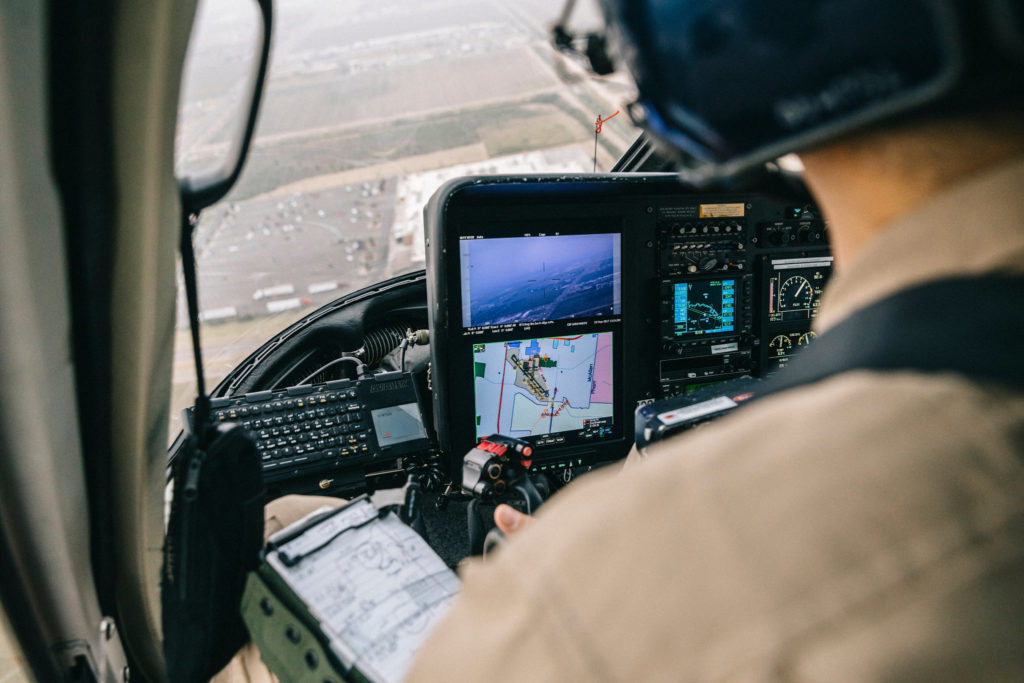
Despite President Trump’s calls for a massive wall to secure the border — which Representative Henry Cuellar, a Texas Democrat, ridiculed as a “14th-century solution to a 21st-century problem” — the fight against illegal immigration and drug trafficking on the United States-Mexico border has increasingly become high tech.

Mr. Trump has proposed an increase of $2.9 billion for border security, but nearly 60 percent of that increase would be for the border wall.
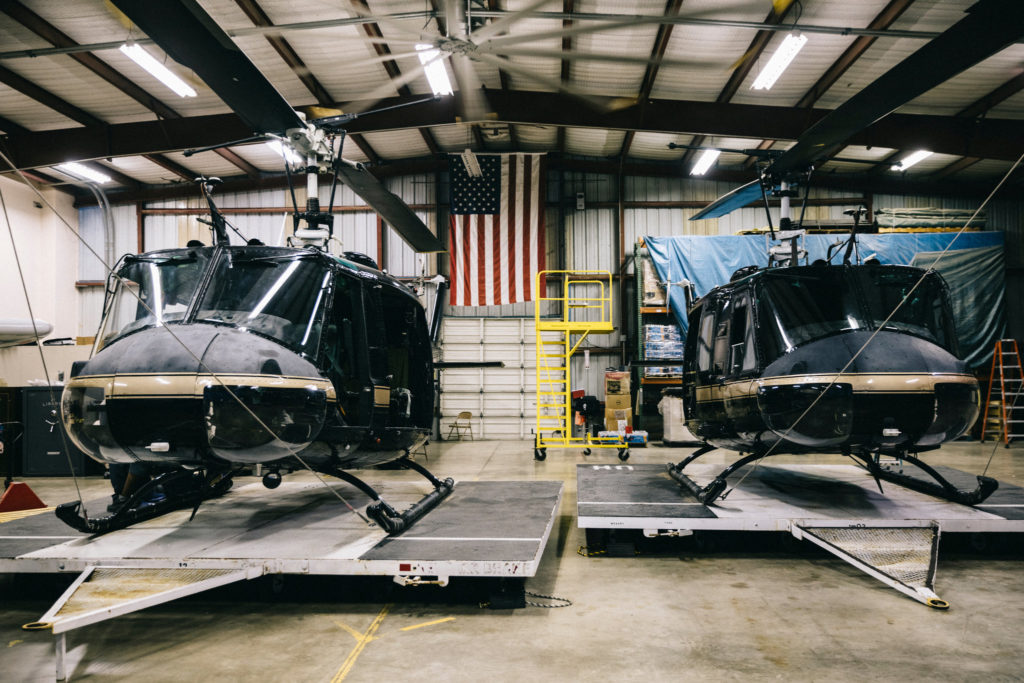
Predator drone aircraft, “aerostats and towers fill in existing gaps along the border where Border Patrol just doesn’t have the manpower,” said David Aguilar, a former acting commissioner of Customs and Border Protection and now a principal at Global Security and Innovative Strategies, a consulting firm in Washington.
“It allows them a view of what is happening on the border,” Mr. Aguilar said, and to “deploy resources to respond to people crossing or drug smuggling.”

That can be easily seen from Mr. Hoyt’s desk. On a recent day, he moved his joystick and zoomed in on dozens of people on the Mexican side of the Rio Grande. He relayed the information to agents near the river who quickly moved in to catch them on the United States side.
The equipment is provided to the Department of Homeland Security under the Defense Department program established to repurpose military equipment previously used in Afghanistan and Iraq.
The Department of Homeland Security also uses more than 12,000 sensors along the border, hundreds of license plate readers at ports of entry, and giant X-ray scanners for trains and trucks. The agency is planning to add smaller drones with facial recognition capabilities, and additional equipment that can capture biometric information.
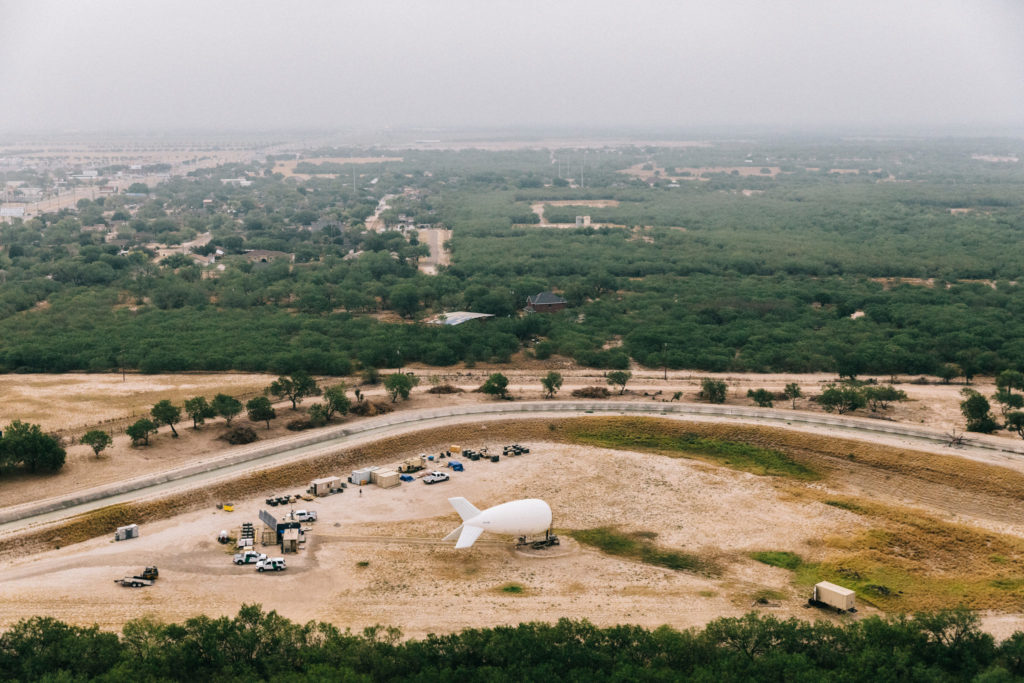
The combined technology creates what some Homeland Security experts say is a virtual wall in some areas of the border that can be as effective as a physical one, at far lower cost.
Mr. Aguilar said acquiring new technology for border security should be the top priority for Homeland Security, above building a wall or other physical barriers and hiring more Border Patrol agents.
“Technology is definitively first,” he said. “These are things that can be used on any part of the border. There are places where you just can’t put a wall.”

While the technology makes it easier and faster to track smuggling and drugs, it also makes it easier to track innocent people.

Guadalupe Correa-Cabrera, a professor at the University of Texas Rio Grande Valley and a fellow at the Wilson Center in Washington, said the buildup of technology on the border had turned once-sleepy towns where people moved freely across the border into mass-surveillance zones.
Every move of residents is documented and cataloged, she said, eroding the privacy of local residents.
Despite the concern of privacy rights supporters, Manuel Padilla Jr., the Border Patrol sector chief for the Rio Grande Valley, said the area actually needed more technology.
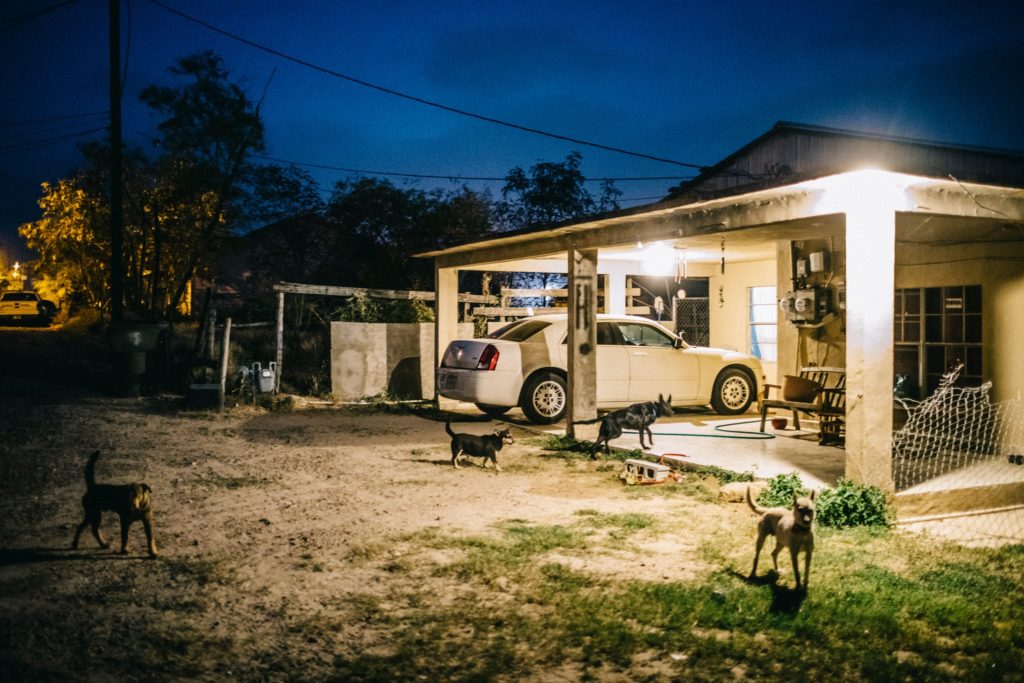
“If you look at the Rio Grande Valley right now, we do not have the situational awareness of knowing what is happening across the border because of the lack of technology,” Mr. Padilla said.
He said the additional technology, such as sensors that can penetrate dense foliage, was needed because Border Patrol agents could not reach many places along the river where there were no access roads.
“In the absence of being able to get in there, we need to be able to see what’s going on so we can catch drug trafficking and other activity” before those who are doing it reach cities in the region, he said.
The use of technology from the Defense Department “has made it possible for us to see some things we didn’t know existed before,” Mr. Padilla said. “But there is a need for more technology to deal with the unique challenges in the valley.”
The technology has also been deployed at ports of entry, where thousands of people cross the border every day. It is used for everything from detecting agricultural pests that pose a threat to the nation’s food supply to catching bulk cash and drug smugglers.
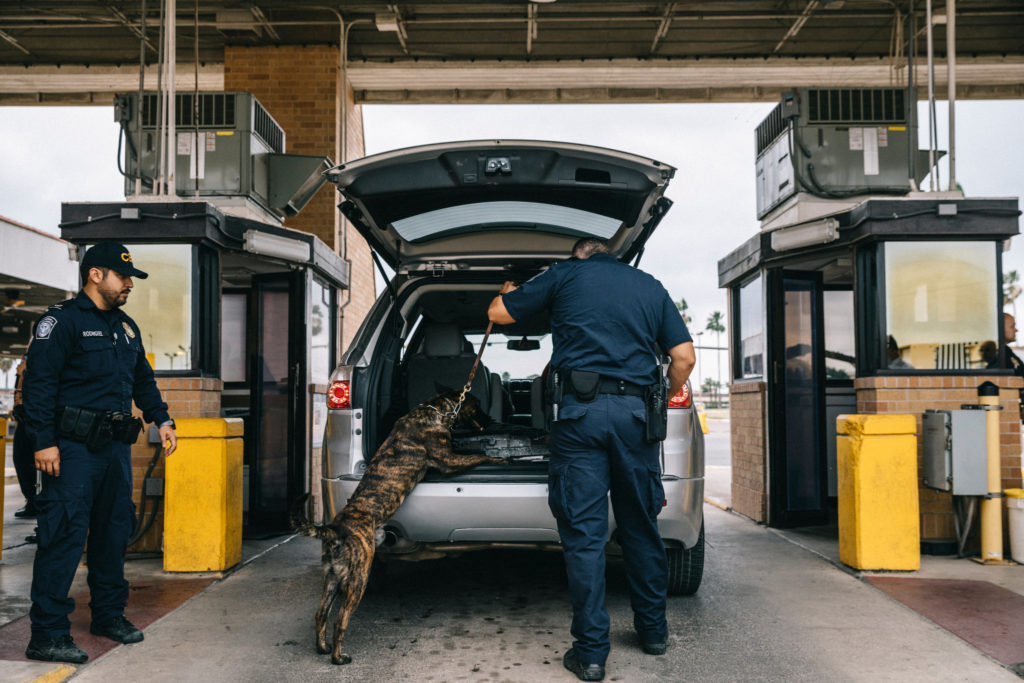
At the Hidalgo port of entry, just across the border from the Mexican city of Reynosa, the technology is on full display.
As vehicles approach checkpoints, stationary cameras take images of the front and rear license plates, an image of the driver and a color picture of the car. Those images are then run through a database to check for criminal records, immigration law violations or terrorist activities.
The cameras also store in a database the location of the vehicle and the date the image was taken — even if a search does not trigger an alert on passengers in the vehicles.
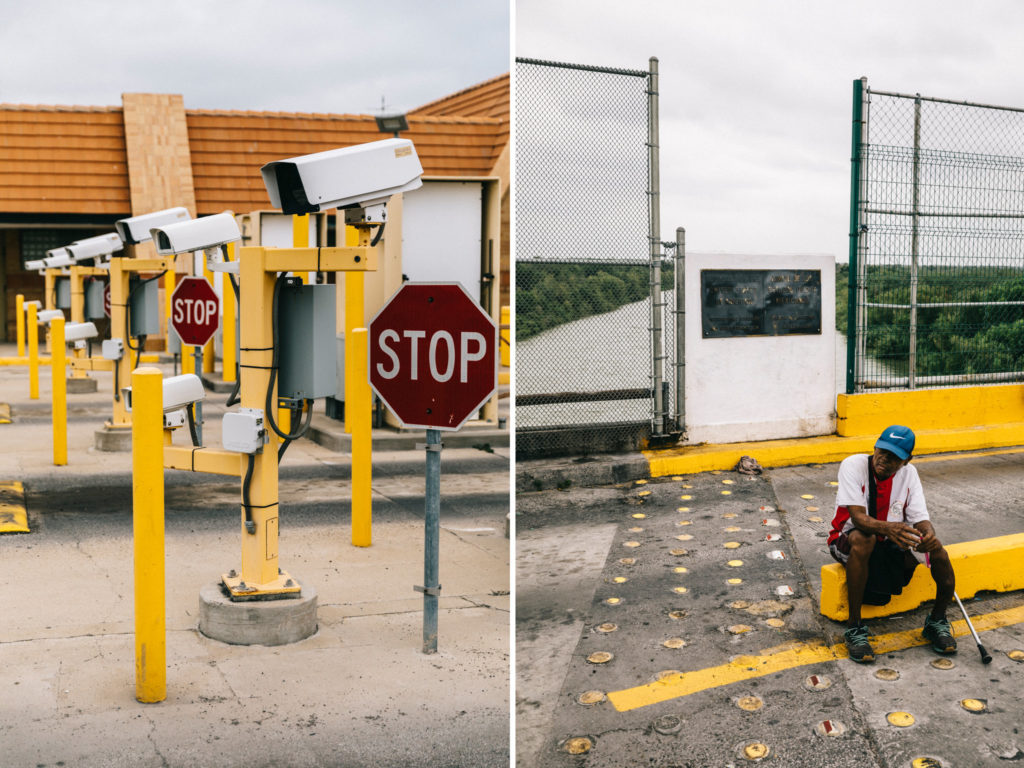
“This gives us a pretty good picture of who is moving across the border,” said Frank Longoria, a Customs officer who is assistant director of field operations for border security. “Ninety-nine percent of people who cross are doing so for good reason, but trying to catch that 1 percent that is doing something illegal is challenging.”
In a small building not far from the entry and exit lanes, a Customs officer, Eugene Jimenez, looked at an X-ray scanning system, which allows him to see anomalies in the frame of a vehicle. He said he was looking for spaces where there should be solid material, or obvious signs of tampering in the gas tanks, batteries or other areas.
A few days before, after a currency detection dog reacted to a white 2008 Volkswagen Passat traveling into Mexico, Mr. Jimenez noticed a space in the bumper when the car was pulled aside for a scan, he said.
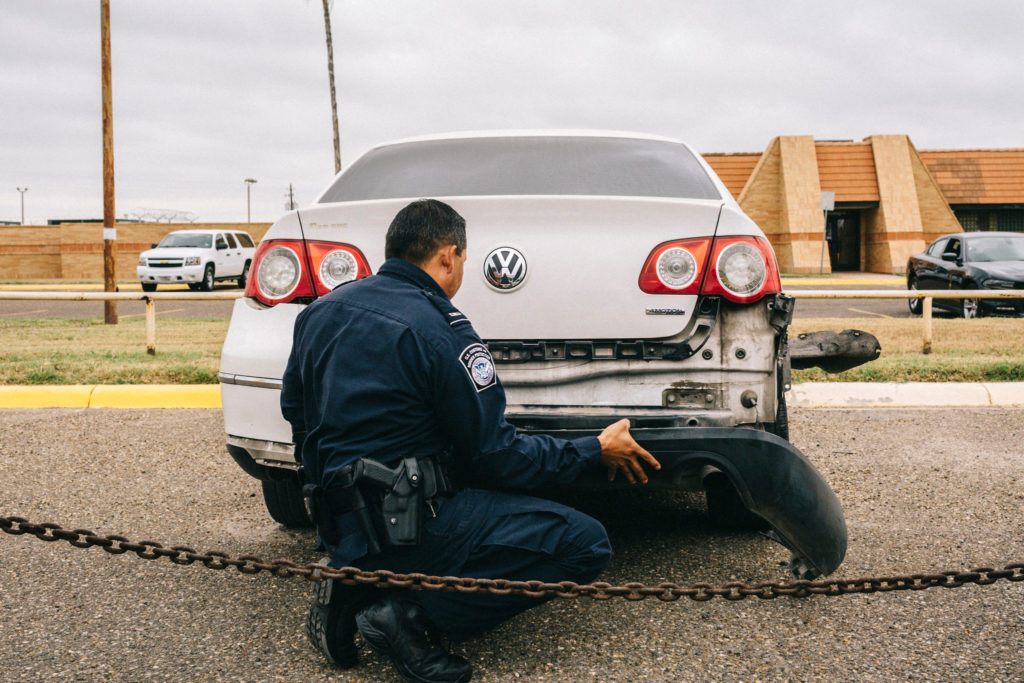
When the bumper was removed, officers discovered more than $250,000 hidden inside. The driver was arrested.
“They can get pretty creative,” Mr. Jimenez said. “We’ve found crystal meth in gas tanks, marijuana made to look like watermelons and limes. You name it.”
Customs and Border Protection officers use larger versions of the scanning machines to examine buses and even trains for drugs and human smugglers.
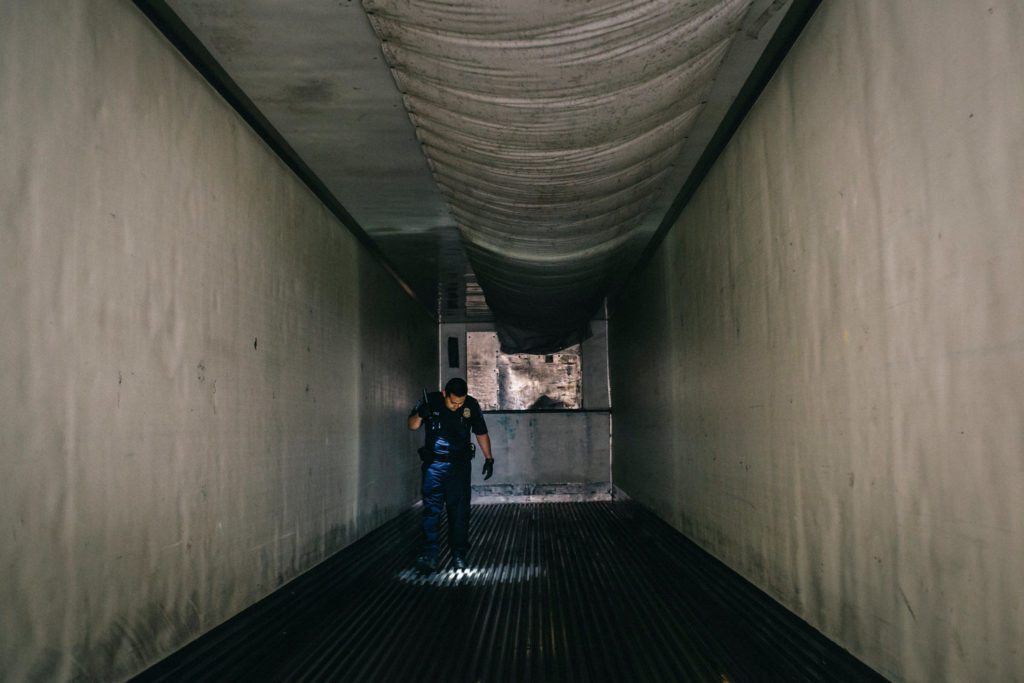
But there are limits to using technology on the border. Predators and aerostats, for instance, cannot fly in thunderstorms or high winds.
The high-resolution cameras cannot see in the thick brush that grows along the Rio Grande, and wildlife or cattle can set off sensors, sending Border Patrol agents chasing false alarms.

And drug cartels are constantly adapting their methods and finding ways to bypass the technology. Over time, Homeland Security officials say, smugglers quickly learn how the systems work and adjust their strategy.

Mr. Longoria said the shift in tactics by cartels showed that the border technology was having the desired effect.
“The fact that they are trying to find more and more creative ways to get their drugs and smuggle people across shows that the layered system of technology and people is working,” he said. “We want to make it as difficult for them to operate as we can. The cameras, blimps and other equipment gives us the ability to do that.”
Updated: 12-10-2019
No Defense Department Money for Border Wall, Court Orders
Judge blocks Trump administration’s attempt to divert $3.6 billion from military construction.
A federal judge in Texas has blocked the Trump administration from using billions of dollars in funding from the Defense Department to pay for construction of a long-promised wall on the Mexican border.
U.S. District Judge David Briones issued an injunction Tuesday blocking the federal government from using $3.6 billion previously earmarked for about 127 military construction projects to fund the wall, as President Trump ordered under an emergency declaration earlier this year. Judge Briones said the administration can only use $1.375 billion approved by Congress for the 2019 budget year for the wall.
The case was filed in El Paso by El Paso County and the advocacy group Border Network for Human Rights.
“The president’s emergency proclamation was a blatant attempt to grab power from Congress,” said Kristy Parker, a lawyer for Protect Democracy, which represented the plaintiffs. “Today’s order affirms that the president is not a king and that our courts are willing to check him when he oversteps his bounds. This is a huge win for democracy and the rule of law.”
The Justice Department said it would appeal the ruling.
Mr. Trump declared a national emergency over border security in February and at the time ordered agencies across the government to identify military and other spending that could be diverted for the wall project.
In July, the Supreme Court ruled in a 5-4 decision that the administration could move the military money to pay for wall construction, a signature campaign promise that has yet to be fulfilled.
In his ruling, Judge Briones, who was appointed by President Clinton, said the permanent injunction didn’t conflict with the Supreme Court ruling because the high court ruled on whether the defense secretary exceeded his authority to redirect military construction funds, an issue he didn’t take up in this case.
Updated: 12-12-2019
Construction of Texas Border Wall Stalls Over Fights With Landowners
Three years into Trump administration, virtually no new wall has been built as farmers, ranchers and a Catholic diocese resist federal efforts to claim their land.
Nearly three years into the Trump administration, almost no border wall has been built in Texas. Local property owners ranging from ranchers to a Catholic diocese and institutions have resisted federal efforts to claim their land.
The resistance in South Texas, where most land is privately owned, illustrates the challenges in building a border wall, even if funding is available.
U.S. Customs and Border Protection has been sending letters and holding meetings for two months asking about 120 landowners with riverfront property around Laredo, to survey their land, the first step in building a wall on it. Some around the South Texas city, where many can see the Rio Grande and Mexico from their porches, said yes right away. But others are resisting, setting up a potential conflict with the government that could drag on for years.
About 200 miles southeast, in the Rio Grande Valley, refusals have led the government to sue 46 landowners for the right to survey their property in preparation for acquiring part of it, including farmers, ranchers, businesses, and several facilities owned by a Catholic diocese.
Some cite ideological reasons for resisting a wall on their land. Others say it will split their properties in two and interfere with their businesses or way of life. Ease of accessing property on the other side of a wall would depend on where the government builds access gates.
Building a permanent barrier along the nearly 2,000 miles of the southern border was a signature promise of President Donald Trump’s 2016 campaign. He and his supporters believe a wall would help to reduce illegal immigration.
In the three years since, the government has built 80 miles of border wall, according to CBP, most of which has replaced existing fencing in California. In the Rio Grande Valley, the government has funding for up to 110 miles of new wall but has yet to obtain the land needed for most of it or to complete construction on the rest.
While Texans are split evenly on whether they support or oppose Mr. Trump’s border wall, those in counties along the border oppose it 54% to 40%, according to a Quinnipiac survey of voters earlier this year.
In Laredo, developer Richard Hachar said he allowed government surveyors on his land because he believes the wall will help with security for his 300 riverfront lots where he plans to build homes. “We have Border Patrol on my property every day,” he said. “If we had a wall, I think it would be beneficial to my sales.”
Mary Furrh Gomez, whose commercial lots are mostly vacant, signed the papers because she figured “if the government decides to do something, they’re going to do it whether you agree with them or not,” she said.
But David Acevedo, who manages a 180-acre riverfront ranch, said he is concerned a barrier would make it difficult to access the Rio Grande river for irrigation and, when pumps fail, for his cattle to drink.
At the more than 100-year-old Sacred Heart Children’s Home, the nuns in charge have refused to give their consent. “The nuns are holding back for the time being,” due in part to concerns over river access and irrigation, said their spokesman, Mercurio Martinez.
Other Catholic institutions have said a wall conflicts with their faith, citing Pope Francis, who in a May television interview criticized “this new culture of defending territories by building walls.” The Diocese of Brownsville has refused federal efforts to survey five parcels of land it owns, including a historic chapel, an oratory with a library and a priest’s home, and three pieces of vacant land that might someday hold churches. It recently received notice of two more properties the government wants to access.
“I don’t want to use the church property to say that no matter how dire your life is, you cannot be received here,” said Brownsville Bishop Daniel Flores. “The government is going to have to take the land. The church is not going to give it to them.”
The Catholic Church is highly influential in this predominantly Hispanic area. The counties around the Rio Grande Valley and Laredo range from 34% to 70% Catholic, among the highest such rates in the nation, according to data from the U.S. Religion Census.
The only new segments of wall in Texas since Mr. Trump took office are south of the city of Donna in the Rio Grande Valley, where three small chunks a few dozen feet long rise above a levee. The stretch of wall begun there is expected to be 8 miles long and cost $167 million, according to CBP. Its construction timeline will depend on how long it takes the agency to get rights to all the needed property.
CBP representatives said, in an email, that the agency chooses projects based on factors including real-estate availability, priority and funding, but that working in short segments doesn’t affect the overall cost.
CBP typically pays $100 to survey land. If a landowner refuses, the government must sue in federal court to access the property. When a survey is complete, the government offers a price, which varies by property, to acquire the needed land. If the landowner declines to sell, the government must sue again to take it through eminent domain.
The Fifth Amendment to the U.S. Constitution allows private property to be “taken for public use,” provided “just compensation” is paid. Its power has been used to help establish parks, clear land for highways and railways, and construct public buildings.
Efrén Olivares, an attorney representing landowners in five open eminent-domain cases, said courts tend to defer to national-security arguments in such cases. Judges may adjust the amount of compensation landowners get, he said.
Judges deciding eminent-domain cases typically try to determine the property’s fair-market value, which can be tricky if a parcel is unique or sales of comparable properties aren’t available.
Some plaintiffs will simply fight to keep their land “until the day they die” Mr. Olivares said, in an effort to run out the clock on a Trump presidency and hope his successor changes course.
The only way Texas landowners who don’t want a wall on their property have avoided a court fight is through congressional intervention. La Lomita Mission, a 154-year-old mission that sits on the banks of the Rio Grande and is part of the Diocese of Brownsville, was specifically excluded from wall construction along with several South Texas wildlife refuges in border-security legislation last year.
Progress on the border wall in South Texas might also be slowed or halted by decisions issued by a Texas court Tuesdayand a California court Wednesday barring the Trump administration from diverting military funding to a border wall. The Justice Department said it would appeal the rulings.
Updated: 12-16-2019
Private Texas Border Wall Caught In Legal Fight
Government wins restraining order halting construction over concerns $40 million barrier, being built with private funds, could change course of the Rio Grande.
An effort to build a privately funded wall along the U.S.-Mexico border, as the Trump administration’s efforts progress slowly, is running into trouble over concerns that its design may alter the border itself.
Construction of the three-mile section in South Texas was halted last week after a U.S. attorney for Texas’s southern district obtained a temporary restraining order Dec. 5 against its builder, Fisher Industries, a North Dakota-based contractor.
The attorney’s office argued that the wall is being built too close to the Rio Grande and could violate a treaty with Mexico by eroding soil and potentially altering the course of the waterway, which demarcates the U.S. border in Texas, when it floods.
Meanwhile, a group called We Build the Wall has raised $25 million online and said it has contributed $2 million toward the South Texas wall’s construction.
Such private moves to build sections of wall come as supporters of President Trump, who agree with him that more secure barriers could help stop illegal immigration and related crimes, seek to speed construction. The federal government has built or strengthened only 90 miles of wall since Mr. Trump took office nearly three years ago, and virtually none in Texas, due in part to resistance from landowners.
Fisher Industries this month won a $400 million contract from the U.S. Army Corps of Engineers to build 31 miles of government-funded border wall near Yuma, Ariz. The Pentagon’s internal watchdog said Thursday it would investigate the contract award after reports that Fisher Industries, which received the award after vocal support from Mr. Trump, hadn’t previously met qualification criteria.
Fisher Industries hopes it can demonstrate the value of the company’s preferred construction style to help it win future federal contracts. “Most people wouldn’t invest $40 million on the fly unless they really believe in it,” the company’s president, Tommy Fisher, said, referring to the projected cost of the wall.
The property being used for construction is owned by a family who support Mr. Fisher’s work. The riverbanks themselves, however, belong to the government, under the treaty with Mexico. Mr. Fisher began construction last month by clear-cutting the thick brush that lines the river and making the natural vertical bank into a beach. He hasn’t yet begun installing the wall’s vertical panels.
Mr. Fisher said he is attempting to conduct an environmental analysis to prove that his wall won’t pose a flood danger. Federal attorneys said in a court hearing last week that they fear that Fisher Industries’s flattening of the natural riverbank and dredging behind it has already done irreparable damage.
The government typically builds its border walls up to a mile north of the Rio Grande to avoid affecting the river and causing potential ecological damage.
The fight between some of the most ardent supporters of Mr. Trump’s border-security policy and his own administration’s U.S. attorney illustrates how divisive the issue has become and how difficult constructing a wall can be in practice.
Much of the rallying for private wall construction has come from the group We Build the Wall. In addition to its online fundraising, the group has posted frequently on social media about the Fisher Industries South Texas barrier, referring to it as “our” wall and seeking donations to continue building it. We Build the Wall also regularly posts videos of a man nicknamed “Foreman Mike” giving updates on the wall’s construction.
However, Mr. Fisher said that “Foreman Mike” has no role in the construction of the wall and came to the site only to film videos.
The U.S. attorney’s office initially included We Build the Wall in its lawsuit seeking to halt the Fisher Industries wall. However, the court removed the group from the lawsuit after its attorneys said it has almost nothing to do with the project.
Brian Kolfage, who founded We Build the Wall, said in an interview that his group didn’t hire Fisher Industries, doesn’t have any authority over the project and has paid only about 5% of its projected cost. He said his group didn’t want to invest more because he knew “it was going to be dicey” with potential lawsuits.
However, Mr. Kolfage defended his group’s public association with Fisher Industries’s wall. “We created this movement,” he said of the private-wall movement. “It doesn’t matter how much money we put down, we’re taking ownership.”
The group previously paid for half a mile of private border wall that Fisher Industries built in Sunland, N.M. That work cost about $9 million, Mr. Kolfage said. He said the group has spent $2 million on the South Texas wall and $1 million hosting events and paying lawyers. It has $8 million saved and $5 million in pledges not yet received, he said.
Updated: 1-8-2020
Appeals Court Allows Use of $3.6 Billion in Military Construction Funds for Border Wall
The Fifth Circuit’s order allowing the Trump administration to proceed wasn’t a final ruling on the merits of the case.
A federal appeals court allowed the Trump administration to move forward with plans to use billions of dollars in military construction money to build a long-promised wall along the border with Mexico.
The Fifth U.S. Circuit Court of Appeals, based in New Orleans, on Wednesday granted the administration’s request to stay the effect of a recent lower court ruling from Texas that had blocked the spending.
The $3.6 billion in U.S. Defense Department funds comprises a significant chunk of the money the Trump administration had intended to put toward border-wall construction this year, with a goal of building about 500 miles of the wall by the end of 2020.
In December, a federal-district court in El Paso, Texas, blocked the administration from moving the money, which had been earmarked for about 127 domestic and foreign military construction projects. Without it, Mark Morgan, acting commissioner of U.S. Customs and Border Protection, told reporters last month the administration likely wouldn’t meet its construction goals.
The Fifth Circuit’s order allowing the Trump administration to proceed came in a brief 2-1 decision, with appointees of Presidents Reagan and Trump in the majority, and an Obama appointee in dissent. The order wasn’t a final ruling on the merits of the case, but gives the administration a green light for now.
The court’s majority cited a Supreme Court order from July that allowed the Trump administration to move ahead with related plans to use military funds for border barrier construction.
The majority also said the plaintiffs suing the Trump administration, the county of El Paso, Texas, and the advocacy group Border Network for Human Rights, likely lacked standing to bring a lawsuit.
President Trump declared a national emergency over border security in February 2019, ordering government agencies to search for a total of $6.7 billion they could divert from military and other projects toward construction of a wall that has formed a central plank of his presidency. That declaration allowed him to skirt Congress, which had only allotted $1.38 billion toward new border barriers.
So far, the administration has built nearly a hundred miles of border wall, though nearly all of it replaced existing, often flimsier barriers. Small sections of new barrier have been erected in Donna, Texas, along the Rio Grande. But the administration’s plans are being slowed by private land owners along large stretches of the border who are resisting federal efforts to seize their land.
Updated: 1-13-2020
Trump Administration Celebrates Wall Construction, but Invisible Barriers Have Shown Greater Impact
Acting Homeland Security Secretary Chad Wolf marks milestone in Yuma, while efforts to curtail asylum-seeking migrants continue apace.
President Trump’s hard line on immigration has been transformational at the southern border, but many experts say his highest-profile policy, the border wall, has had minimal impact.
Immigration officials, including acting Homeland Security Secretary Chad Wolf, gathered here Friday to celebrate the 100th mile of border barrier—30-foot steel bollards placed a few inches apart—built by the administration. The officials looked on as a representative of the Army Corps of Engineers affixed to the fencing a metal plaque that bore the presidential seal and Mr. Trump’s name.
“This is a milestone achievement for the president…and more importantly, for our country,” Mr. Wolf said.
Last year, a surge of Central American families seeking asylum drove the largest spike in illegal migration across the southern border, a humanitarian crisis that quickly spun into a political one. The Trump administration responded with a series of policies that have helped cut border crossings more than 75% from their peak in May.
But many experts on both sides of the political divide agree that the new sections of border wall, the most visible representation of Mr. Trump’s commitment to immigration enforcement, weren’t chiefly responsible for the decline.
The wall, they say, can help slow migrants who hope to evade capture. But asylum seekers—who make up the majority of crossers for the past half-decade—are looking to surrender to the first border agent they spot.
“The question of the wall, for both sides, is no longer a question of what works or doesn’t work to prevent people from crossing the southern border,” said Raphael Cohen, a senior political scientist at the nonprofit think tank Rand Corporation. “It’s taken on symbolic significance.”
The new fencing, at about $1 million per mile, is perhaps the administration’s most expensive immigration-enforcement tool. It does pose a more significant hurdle than the barbed wire or 3-foot vehicle barriers it is often replacing. But the administration has limited construction primarily to public land—where it faces the fewest legal hurtles—placing the newer wall structures in remote areas with relatively few border crossers. It has also put up almost no new barriers in places where ones didn’t already exist.
In the sections where new fencing has gone up, migrants can still scale it. A video recently circulated on social media and verified by U.S. Customs and Border Protection showed three people climbing the 30-foot bollards using a rope ladder and sliding down the other side. Border-crossers can also alter routes slightly to find areas where taller structures haven’t yet been erected.
“The idea that a wall prevents asylum seekers is incorrect. It would simply redirect them,” said Doris Meissner, who headed the Immigration and Naturalization Service, the then-parent agency of the Border Patrol, in the Clinton administration.
Mr. Wolf said in an interview that the administration views the wall as one tool among many. “We are trying to drive that illegal crossing to areas that the border patrol can better position Border Patrol officers in,” he said.
Meanwhile, the administration’s patchwork of invisible barriers—policies designed to deter or prevent migrants from seeking asylum at all—has had far-reaching impact on life at the border.
Today, a migrant who crosses the border seeking humanitarian protection will most likely be assigned an immigration court date months in the future and returned to Mexico, where he or she must wait months in border cities so dangerous that the U.S. State Department has restricted travel to the region. Other migrants are sent to Guatemala, where they are told to apply for asylum instead. Still others are put in an experimental program giving them just seven days to find a lawyer and apply for asylum, a process that normally stretches months or years. If they lose their claims, they are deported.
The administration has also sought to change the definition of asylum, barring anyone from qualifying if they passed through a third country en route to the U.S., effectively disqualifying anyone crossing the border who isn’t Mexican.
“They have, for all intents and purposes, ended asylum at the southern border,” said Ali Noorani, president of the National Immigration Forum, a nonprofit that supports liberalized immigration legislation.
Sustaining the low numbers is likely to prove more difficult.
Deterrence policies work for only so long, experts say, amid continuing violence and poverty in Latin America. The measures that have proven the most effective are contingent on federal courts still weighing their legality, as well as the cooperation of countries like Mexico and Guatemala, whose governments have faced popular resistance to working with the U.S.
Progress on the wall, meanwhile, has been halting. Opposition from Congress and private land owners along the border has blocked construction of barriers where none exist. Funding delays have forced the government to revise down the length of new border wall it hopes to have under way this year.
The president’s advisers believe tough immigration enforcement continues to be a winning campaign message for Mr. Trump, and administration officials are preparing to roll out more initiatives in the months ahead to highlight his commitment.
Jared Kushner, a White House senior adviser and the president’s son-in-law, is preparing a border-security plan that the Trump administration hopes to use to unite Republicans. Stephen Miller, a senior White House adviser, is overseeing a separate plan to revisit the president’s travel ban—the administration’s first major immigration policy decision, which blocked citizens of several Muslim-majority nations from entering the U.S.—by expanding it to as many as seven additional countries.
Mr. Wolf has nodded to several other administration goals, including a crackdown on so-called sanctuary cities, jurisdictions that don’t cooperate with the federal government to deport people. He is also looking to bar states like New York from passing laws to give unauthorized immigrants driver’s licenses.
Still, the wall remains the most potent symbol among Mr. Trump’s supporters of a president keeping his promises. A Pew Research Center poll in January 2019 found 82% of Republicans and Republican-leaning independents supported expanding the wall. White House officials have discussed setting up a 24-hour camera pointed at border construction crews. In the months ahead, the campaign plans to bring delegations of conservative supporters to the border to see the progress.
“The wall is probably the single most important thing he can point to to show he has made progress,” said Mike Howell, a senior adviser at the Heritage Foundation who until last year served as a Trump administration appointee at DHS.
Updated: 2-2-2020
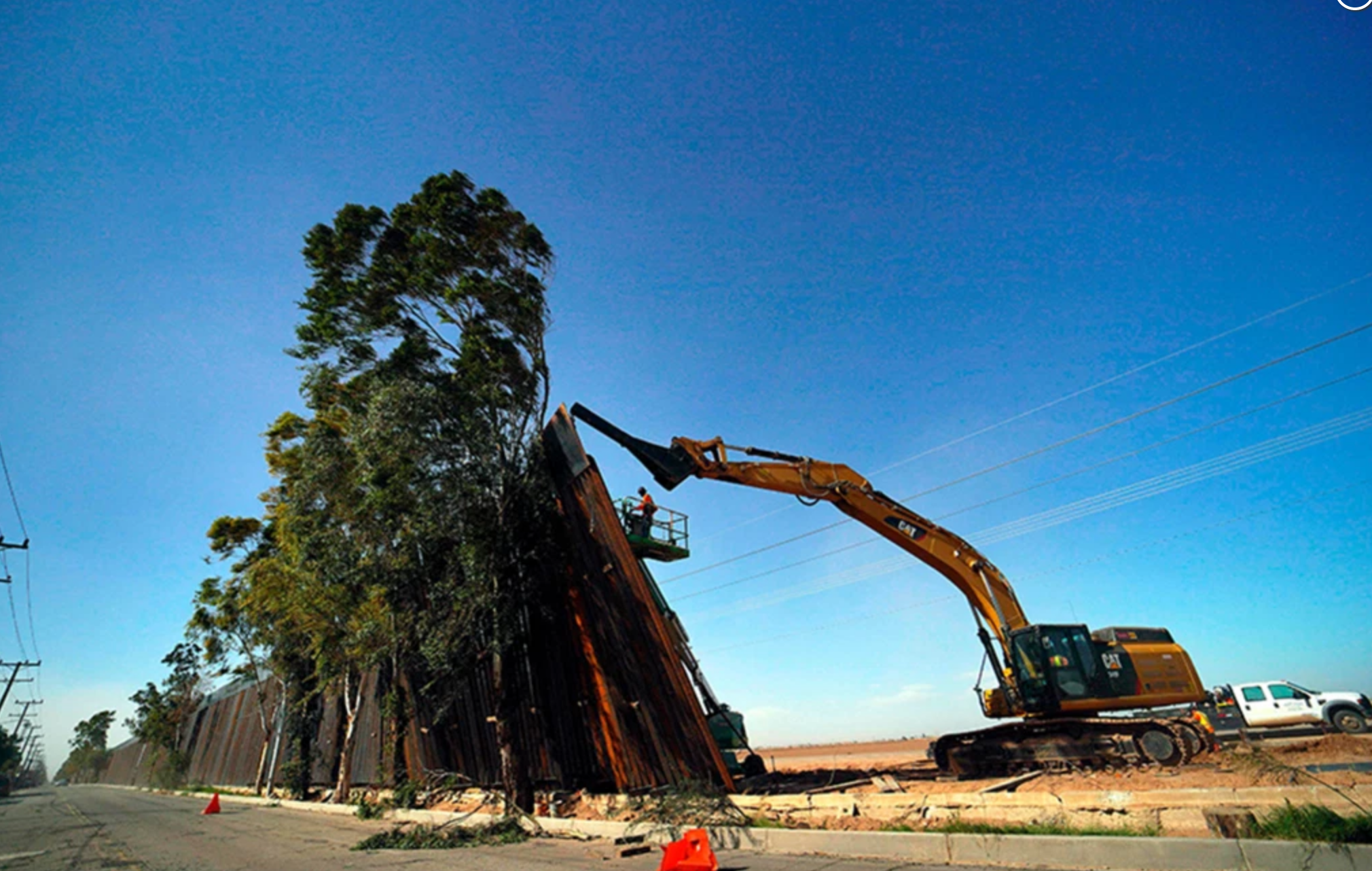
Portion Of US Border Wall In California Falls Into Mexico Amid High Winds
A newly constructed portion of the US border wall tumbled into Mexico Wednesday afternoon amid high winds, a report said.
Panels from the wall broke free from their concrete foundation, which had yet to set, in Calexico, California, US Customs and Border Protection Agent Carlos Pitones told CNN.
The panels landed on trees and nobody was injured.
Pitones said the panels couldn’t withstand the windy condition since the concrete had yet to cure, the report said.
“We are grateful there was no property damage or injuries,” Pitones told the outlet.
It’s unclear when wall construction in the area will resume.
Section Of The Border Wall Has Just Been Blown Over By The Wind (Idiots!!)
A newly constructed section of the border wall has just been blown over — by the wind. It’s one of the many reasons the No Border Wall Coalition has a message for the U.S. government: the wall isn’t worth it.
These concerned Americans see many reasons to stop construction now. They point to the 21 billion dollar price tag, the environmental costs, and the infringement on the rights of border communities, to name a few.
If you want to see the wall stopped, you can take a stand by signing their petition today:
Updated: 2-13-2020
Trump Administration to Repurpose $3.8 Billion in Military Funds for Border Security
Funds will be used for building barriers along U.S.-Mexico border.
The Trump administration is moving to repurpose $3.8 billion in military funds for building barriers along the U.S.-Mexico border, according to documents reviewed by The Wall Street Journal.
The administration, which has already shifted $6.7 billion toward barrier construction from across the government, is planning to divert a total of $7.2 billion of military funding toward border-wall construction this fiscal year.
The transfer takes Department of Defense funds slated for new aircraft, naval ships, and equipment for the National Guard, and instead puts them toward assisting the Department of Homeland Security, according to the documents.
President Trump declared a state of emergency a year ago, allowing his administration to shift money from the military for wall construction, after Congress declined to give him the funds he said were needed to build a wall along the U.S.-Mexico border.
The Pentagon transfers, along with about $4.2 billion that Congress has put toward the wall over the past three years, brings the Trump administration to the $18 billion total it said in 2018 was the price tag to build its preferred style of border fencing, 30-foot steel bollards placed about three inches apart.
In its budget request released Monday, the administration estimated the total would allow them to build about 1,000 miles of the wall, assuming Mr. Trump wins a second term and can see the project through.
So far, U.S. Customs and Border Protection, which oversees the wall, has reported building 108 miles of wall, though 107 of them replaced existing fencing or other barriers. Officials have said they hope to have about 450 miles completed or under construction by the end of 2020.
Updated: 2-18-2020
Trump Administration Plans to Waive Contracting Laws to Speed Up Wall Construction
Homeland Security to drop restrictions on open competition for federal contracts, among others.
The Trump administration is planning to waive some federal contracting laws to accelerate construction of its southern-border wall, according to a notice filed Tuesday by the Department of Homeland Security.
The laws to be waived include, among other things, a requirement that the government hold an open competition for federal contracts and that it justify its contract selections. according to the notice, which is set to be published Thursday in the Federal Register.
Disregarding such requirements could allow the Department of Homeland Security to more quickly erect new sections of barrier, as the administration works toward meeting a self-imposed goal of completing about 450 miles by the end of 2020.
“We hope [waiving those laws] will accelerate some of the construction going on along the southwest border,” acting Homeland Security Secretary Chad Wolf said Tuesday on Fox News.
The administration so far has built about 119 miles of its preferred style of border fencing—30-foot steel bollards designed to be tough to climb. Most of those miles cover areas where smaller barriers previously existed.
Conservative commentators and voters in President Trump’s political base look to wall construction as one of the most concrete signs Mr. Trump is fulfilling his campaign promises. As part of his re-election effort, Mr. Trump’s advisers have discussed producing videos of construction crews working on the project and taking delegations of political supporters to the border.
The affected projects, DHS said, span 177 miles across California, Arizona, New Mexico and the western stretch of Texas, and at least 94 miles are expected to be completed this year.
DHS has wide authority to waive most federal laws—including those protecting the environment and endangered wildlife—in service of building a barrier along the U.S.-Mexico border. Tuesday’s announcement marks the first time the administration has sought to short-circuit the federal contracting process to speed up wall construction.
The move is sure to spark a legal fight. Opponents have challenged several aspects of the administration’s wall plans, including waving the need for environmental inspections at its building sites and shifting billions of dollars from the Defense Department’s budget to pay for the project. So far, federal courts have sided with the administration.
Rep. Bennie G. Thompson (D., Miss.), chairman of the House Committee on Homeland Security, criticized the waiver plan in a statement Tuesday. “This waiver is another example of bait and switch by the president. If he really cared about stopping the drugs that are killing our kids, he’d strengthen ports of entry because that’s where 90 percent of opioids are entering this country,” he said
The administration is, however, being scrutinized for at least one contract it awarded for wall construction near Yuma, Ariz. In December, the Pentagon’s inspector general opened an investigation into a decision by the Army Corps of Engineers to award the $400 million contract to Fisher Sand & Gravel Co., which had previously bid on the contract, lost, then sued the administration.
The company’s owner, Tommy Fisher, is a prominent Republican donor from North Dakota who frequently appears on Fox News and other conservative news channels touting his ability to build a wall.
Fisher Sand & Gravel said in December that it won the contract through a fair process, by pitching “the lowest-priced, technically acceptable offer,” and that it would cooperate with the investigation. The company didn’t respond Tuesday to a request for comment.
Updated: 6-26-2020
Appellate Court Says Trump Unlawfully Transferred Military Funds For Border Wall.
The ruling won’t affect construction plans for now, but could set the stage for Supreme Court consideration.
A federal appeals court ruled Friday that the Trump administration acted unlawfully when it transferred $2.5 billion in military funds for use in the construction of a southern U.S. border wall.
The decision won’t have an immediate practical impact, however, because the Supreme Court last summer issued an order that gave the administration an early green light to start the construction during litigation.
That order remains in effect while the government continues to battle in court. Friday’s decision could set the stage for the Supreme Court to consider the case in full during its next term.
The San Francisco-based Ninth U.S. Circuit Court of Appeals issued a pair of decisions that said the administration had no valid legal basis for spending the money.
Congress, which controls the power of the purse, didn’t approve it, and the border wall wasn’t the kind of unforeseen military requirement that allowed for the use of those funds in emergency circumstances, the court said.
Chief Judge Sidney Thomas, writing for the majority in a 2-1 decision, noted that Congress repeatedly rejected President Trump’s requests for billions of dollars to fund wall construction, giving him just a fraction of the money requested for a border-barrier project.
Lawmakers “intended to withhold additional funding for the wall, regardless of its source,” said Judge Thomas, a Clinton appointee. “‘No’ means no.” Joining him was Judge Kim McLane Wardlaw, who also was appointed by President Clinton.
In dissent, Judge Daniel Collins, a Trump appointee, said the plaintiffs didn’t have a proper legal basis for challenging the transfer of funds, and even if they did, the transfer was legal.
Last July, the Supreme Court granted an emergency request by the government to allow construction for the time being. That order came on a 5-4 vote, with the high court’s conservative majority suggesting they may agree with the Trump administration’s arguments that legal challengers had no proper basis for obtaining court review of the funds transfer.
That order wasn’t a final ruling on the substance of the case. After Friday’s appeals court decision, the matter could be back before the Supreme Court during its next term, which begins in October.
The political fight over the border wall was one of the most divisive of the Trump presidency, leading to a budget standoff, a partial government shutdown and a national-emergency declaration by Mr. Trump to divert money for wall construction from other government sources.
Some, but not all, of the money the administration has wanted to spend was dependent on the president’s emergency declaration.
Neither the Department of Homeland Security nor the Justice Department immediately responded to requests for comment.
The cases before the Ninth Circuit involved lawsuits by the Sierra Club and Southern Border Communities Coalition, as well as a group of states led by California.
“President Trump’s xenophobic wall is already leveling protected lands, desecrating cultural sites and destroying wildlife,” said Dror Ladin, an American Civil Liberties Union lawyer who represented the private plaintiffs. “There’s no undoing the damage that’s been done, but we will be back before the Supreme Court to finally put a stop to this destructive wall.”
“Today, the court reminded the president—once again—that no one is above the law,” said California Attorney General Xavier Becerra, a Democrat.
Updated: 8-17-2020
Illegal U.S.-Mexico Border Crossings Are Rising Again, Driven by Single Adults
New trend is a marked change from the waves of Central American families in recent years; repeat crossings become popular after Covid-related change.
Illegal crossings are back on the rise at the southern U.S. border after having plummeted at the start of the coronavirus pandemic, driven by a large increase in single adults from Mexico.
It is a marked shift from the past five years, during which a surge of asylum-seeking families and children from Central America accounted for most of the people entering the U.S. without legal authorization and at times overwhelmed the immigration system.
Border Patrol agents made roughly 38,000 arrests in July. It was the third consecutive month of steady increases since arrests plunged to roughly 16,000 in April, after the Trump administration announced on March 20 that nearly everyone caught entering the country without permission would be quickly turned back under a 1944 health law.
Single adults made up 89% of 90,621 people stopped by the Border Patrol between May and July of this year, compared with 30% of the nearly 300,000 caught in the same period last year.
National Deputy Border Patrol Chief Raul Ortiz said much of the increase stems from the fact that his agency is quickly sending back single adults to Mexico without detaining them because of Covid-19 fears.
Before the coronavirus pandemic, single adults caught crossing the border illegally could face criminal prosecution and time in jail in the U.S. Now, only migrants with serious criminal histories or who are thought to pose a threat to national security or public safety face detention before deportation.
Last month about 34% of people arrested were repeat offenders, the agency said. During the 2019 budget year, 7% of arrests involved returning migrants.
“They are sending back people very quickly, in hours,” said Armando Quintana, a 28-year-old mechanic from Michoacán state who arrived last week in Ciudad Juárez to try to cross the border into Texas. “The rumor is that chances of crossing undetected are higher, as you can try and try again without much consequences.”
About 80% percent of those who are quickly returned to the Mexican state of Tamaulipas try to cross the border again, said Gloria Garza, a deputy interior minister for that state. Smugglers, she said, charge between $3,000 and $5,000 for three tries.
“We are counting double or triple the same person that is constantly coming and going across the border,” Ms. Garza said.
Updated: 9-10-2020
Private Texas Border Wall Will Fall Into Rio Grande, Opponents Say
Engineering reports related to lawsuits cite erosion after Hurricane Hanna; contractor says problem has been remedied.
Opponents of a privately funded Texas-Mexico border wall are arguing that land erosion after Hurricane Hanna proves that the wall will fall into the Rio Grande River, citing engineering reports.
We Build the Wall, a nonprofit that claimed credit for the project despite having little role in it, recently saw its leaders, including former Trump adviser Steve Bannon, accused of defrauding donors who gave to private border wall efforts. All have pleaded not guilty and are set for trial next year.
Meanwhile, the project’s contractor, North Dakota-based Fisher Industries, continues to receive billions of dollars in government contracts.
Two lawsuits are pushing back against the wall in South Texas—one from the federal agency that enforces border treaties with Mexico and another from a neighboring butterfly preserve. The late August engineering reports came after parties to the lawsuits were granted access to the wall, on private land, to inspect it on Aug. 3. Trials in the suits haven’t yet been scheduled.

Fisher Industries self-financed the $40 million three-mile stretch of wall, which it built directly on the Rio Grande riverbank near Mission, Texas, this year, over the objections of some neighbors and the binational agency that enforces treaties with Mexico.
The critics argued the project would cause erosion that could shift the river’s course, and potentially the border itself. They believe that is now starting to happen, after gashes in the bank appeared under portions of the wall, months after it was built, they said.
“Fisher Industries’ private bollard fence will fail during extreme high flow events and further exacerbate damage at the failure site[s] and to adjacent lands,” wrote Mark Tompkins, an engineer working for the National Butterfly Center, which is claiming the wall could increase flooding on its property. He added that the July Category 1 hurricane was minor compared to large storms often seen there.
Representatives of Fisher Industries told a federal judge in a status hearing on Thursday that the wall is stable and the erosion has been repaired. “We don’t agree it’s a serious issue,” said Mark Courtois, an attorney for the firm. “We think it’s remedied.”
Fisher Industries President Tommy Fisher argued in court late last year that authorities couldn’t prove his wall would harm the river. He said he was willing to build it on his own dime to try to show off his construction skills and win more federal contracts.
On that front, Mr. Fisher has been successful. His company, which had no previous experience with government contracts, won its first in December, for $400 million, to build 31 miles of Arizona border wall, after public support from President Trump. A $1.3 billion contract for 42 miles followed. The most recent contract, for $289.5 million to build 17 miles of wall near Laredo, Texas, was announced last month.
“This billboard—and that’s what it is—has been used to get more than $2 billion in taxpayer contracts while [it] is going to fall into the river,” said Marianna Treviño-Wright, executive director of the National Butterfly Center, of the private wall.
Ms. Treviño-Wright is suing both Fisher Industries and We Build the Wall, accusing the latter of defamation for tweeting that she supports cartels and smugglers. Attorneys for We Build the Wall said Thursday the organization’s assets were frozen when its principals were indicted, potentially compromising defense in the South Texas case.
We Build the Wall, an organization founded by Air Force veteran Brian Kolfage in 2018 to fundraise for stretches of private wall, contributed less than $2 million of the wall’s cost and has no formal stake in it, but regularly took ownership of it on social media. The group would promote Fisher’s wall to encourage donors and post construction updates from “Foreman Mike”—a man who had no role in construction but visited the site to film videos.
We Build the Wall touted raising more than $25 million from 500,000 donors. Mr. Kolfage and Mr. Bannon and two others were arrested last month, accused of siphoning hundreds of thousands of that for personal use.
Mr. Fisher cleared three miles of riverbank, flattened the natural vertical bank into a beach and built the 18-foot wall right next to the water—in contrast to the federal government, which is building the South Texas border wall on levees outside the Rio Grande’s floodplain.
Despite his previous support of Mr. Fisher, Mr. Trump took aim at the wall over the summer. In response to a ProPublica investigation showing erosion there in July, Mr. Trump tweeted, “I disagreed with doing this very small (tiny) section of wall, in a tricky area, by a private group which raised money by ads. It was only done to make me look bad and [perhaps] it now doesn’t even work.”
Updated: 10-15-2020
Illegal Border Crossings Rise Since Hitting Three-Year Low In April
Though numbers fell steeply this fiscal year, last month was Border Patrol’s busiest September since 2006.
The number of migrants caught crossing the U.S.-Mexican border illegally rose for the fifth straight month in September, after the Trump administration earlier this year launched a pandemic policy allowing border agents to immediately expel anyone caught making such an attempt.
Border Patrol agents caught 54,771 migrants crossing the U.S. border with Mexico last month and immediately expelled 48,327 of them, making it the busiest September at the border since 2006, according to figures released by the agency Wednesday.
Apprehensions along the border have been steadily increasing since hitting a three-year low in April of just over 16,000, the first full month after President Trump declared an emergency at the border in March, citing the coronavirus pandemic in authorizing border agents to quickly remove nearly every foreigner caught crossing into the U.S. without giving them the chance to ask for asylum.
The total number of migrants caught at the border fell by more than half to about 400,000 in the government’s 2020 budget year, which ended in September, following a peak in the same period a year earlier when a wave of Central American families and unaccompanied children overwhelmed border officials and led to dangerous overcrowding in detention centers.
The total for the 12-month period ending in September marked a return to the levels recorded during the Obama administration, when Border Patrol agents registered more than 500,000 annual apprehensions only once—in the 2009 budget year. Such apprehensions at the border had been declining since June 2019, when the administration ramped up a policy that forced asylum seekers to wait out their court cases in Mexico, and they remained low through last fall.
Mark Morgan, the acting commissioner of U.S. Customs and Border Protection, the Border Patrol’s parent agency, credited that program, known as Remain in Mexico, as a “game-changer,” speaking at a press conference on Wednesday. A federal appeals court in February blocked the program, saying it violated federal immigration law. That ruling was stayed the following month, and the Supreme Court could hear an appeal.
Mr. Morgan predicted that illegal border crossings, which began to rise in the latter half of the year, would continue climbing as countries across Latin America experience the prolonged economic effects of the pandemic and more migrants head north in search of work. “This makes it even more critical that we understand how important border security is,” he said at the press conference.
In March, midway through the fiscal year, the Trump administration introduced its pandemic border policy that allowed border agents to immediately turn back any migrants they encountered, rather than arresting and formally deporting them. The move was intended to keep migrants out of border-detention centers, where Covid-19 could quickly spread, and allowed the government to deny migrants a chance to ask for humanitarian protection.
The quick removal policy is the subject of a class-action lawsuit brought by the American Civil Liberties Union on behalf of unaccompanied children, who are protected under U.S. immigration laws from being rapidly deported, as many now are.
The policy has also had an unintended result: Because migrants face no formal consequences for attempting to cross the border, many more are making repeat attempts.
Customs and Border Protection hasn’t released formal figures on how many migrants are making multiple attempted crossings, though Border Patrol Chief Rodney Scott at the same press conference on Wednesday said the number had climbed past 50% at sections of the border, including San Diego.
Migrant advocates at the border have reported finding more bodies in remote desert areas where people have tried to sneak into the country undetected. The agency previously said recidivism had risen to about 34% in July. Recidivism was 7% in the 2019 budget year.
The shifting circumstances have led to a change in the profile of migrants crossing the border, with single adults from Mexico, rather than Central American families, making up a majority of those attempting to enter the U.S.
Single adults tend to make the journey in search of better work opportunities in the U.S. and generally are more easily and quickly deported because they tend not to make asylum claims.
Updated: 10-23-2020
Trump Administration Races To Meet Border-Wall Goal
President set a target of building 450 miles of wall by the end of this year.
The Trump administration is building new sections of a wall on the nation’s southern border wherever it can and as quickly as it can to try to meet the president’s goal of building 450 miles by the end of this year.
President Trump set the goal about a year ago and, to fulfill it, contractors are building largely on land the federal government already owns, including in areas where illegal border crossings have been relatively low in recent years.
In some cases, the new wall is replacing a shorter border fence installed in the late 2000s. In other locations, new stretches of wall are being built where previous administrations opted for barriers designed to stop only cars or where the rugged terrain already serves as a natural barrier.
Administration officials have said the project is necessary to keep people from crossing the border illegally, arguing the government can’t afford to wait for any specific section of the border to become a hot spot before building barriers there.
In a speech in Arizona Thursday, acting Department of Homeland Security Secretary Chad Wolf said every mile of barrier being built right now is “new, whether we are constructing it in places where no barriers existed before or we’re replacing 5-foot steel barriers with an 18-foot to a 30-foot bollard-style wall complemented with roads, enforcement cameras and other related technology.”
During the government’s 2020 budget year, which ended in September, the number of people arrested illegally crossing the border was down by more than half from a year earlier.
Arrests at the border started to decline in the summer of 2019 after the administration expanded a program requiring asylum seekers to wait in Mexico for U.S. court hearings. Arrests dropped again after the Covid-19 pandemic forced shutdowns around Central America.
In Arizona, where much of the new construction has taken place, new spans of wall cut through marshland and cross a river, where floodgates were installed to accommodate cresting water.
In Guadalupe Canyon, a remote, mountainous region that straddles Arizona and New Mexico, construction crews have been using dynamite to level the steep slopes where the wall is being built. Fresh cuts through the dirt and rock mark where a new 4.7-mile span of wall will extend, at a cost of about $41 million a mile.
“At this point, the building is largely opportunistic in order to meet political demands,” said Doris Meissner, who served as commissioner of the former Immigration and Naturalization Service in the Clinton administration. “A wall is not an all-purpose, one-size-fits-all solution for the challenges of border enforcement.”
At a news conference in Tucson, Ariz., last week, Border Patrol Chief Rodney Scott said the new wall system, which includes border access roads and lighting, has freed up agents to patrol in more-remote areas.
“Every mile of border (wall) system is an investment with an immediate return on investment to the American taxpayers,” he said.
Legal and political battles over Mr. Trump’s border wall, one of his signature proposals during the 2016 presidential campaign, stymied construction for much of the first two years of his term. A fight over funding for the wall triggered the longest government shutdown in U.S. history. In February 2019, Mr. Trump declared an emergency at the border, eventually allowing him to shift about $10 billion from the Pentagon to pay for the project.
Multiple federal courts have ruled that Mr. Trump’s use of the military money was unlawful, because the Constitution gives Congress the power to decide how federal money is spent. The Supreme Court announced on Monday it would take up the question next year.
Before Mr. Trump began using military money, just 37 miles of his preferred style of border barrier had gone up. The next January, the administration marked 100 miles of new wall with a celebration and a metal plaque bearing Mr. Trump’s signature.
By mid-October, the administration had built about 370 miles, all but 45 replacing existing fencing or vehicle barriers, putting up an average of 10 miles a week.
Much of the new wall is a 30-foot structure made of diamond-shaped steel posts filled with cement and sunk several feet into the ground. Some of it is replacing 15-to-18-foot fencing built during President George W. Bush’s administration, which construction crews are tearing down just before sinking the new taller posts.
Along one road in Sasabe, Ariz., southwest of Tucson, piles of steel tubes from fencing built in the 2000s were waiting to be hauled away earlier this month.
Much of the new wall is being built in and around Tucson, which was long the Border Patrol’s busiest sector. As migrant patterns shifted to Central America, the stretch of border around Texas’ Rio Grande Valley has now surpassed it. In the 2007 fiscal year, border agents arrested more than 378,000 people caught illegally crossing the border near Tucson. In the fiscal year ended Sept. 30 of this year, they arrested about 58,000 people.
In the Rio Grande Valley, however, there has been little progress on the new wall, with just 3 miles finished to date. Dozens of miles are under construction, according to Customs and Border Protection. Much of the land the government needs is privately owned, and for several years the government has been filing eminent-domain lawsuits to try to seize it.
According to the Texas Civil Rights Project, a left-leaning nonprofit, lawsuits against private landowners have gone from about three a month in 2019 to 13 filed in July.
The government has been able to keep up construction by building on land it already owns in Arizona and California, large parts of which are protected for conservation. Under a 2005 law, the Department of Homeland Security is permitted to waive almost any law that could block or slow border-wall construction, including environmental rules governing clean air and water and contracting laws that normally require the government to award projects to the lowest bidders.
The San Bernardino National Wildlife Refuge, a 10-mile expanse of wetland near the Guadalupe Canyon that is home to several species of endangered Yaqui fish, is marked along the border by the new wall, with multiple gaps remaining where contractors intend to add flood gates.
The sounds of calling quail and chirping birds were being drowned out by heavy machinery on a recent weekday.
The area is so remote that, according to Ann Kirkpatrick, the Democratic congresswoman who represents the area, border patrol agents made just six arrests there in 2018.
A Smart Border Wall,A Smart Border Wall,A Smart Border Wall,A Smart Border Wall,A Smart Border Wall,A Smart Border Wall,A Smart Border Wall,A Smart Border Wall,A Smart Border Wall,A Smart Border Wall,A Smart Border Wall,A Smart Border Wall,A Smart Border Wall,A Smart Border Wall,A Smart Border Wall,A Smart Border Wall,A Smart Border Wall,A Smart Border Wall,A Smart Border Wall,A Smart Border Wall,A Smart Border Wall,A Smart Border Wall,A Smart Border Wall,A Smart Border Wall,A Smart Border Wall,A Smart Border Wall,A Smart Border Wall,A Smart Border Wall,A Smart Border Wall,A Smart Border Wall,A Smart Border Wall,A Smart Border Wall,A Smart Border Wall,A Smart Border Wall,A Smart Border Wall,A Smart Border Wall,A Smart Border Wall,
Related Articles:
Trumponomics Has Destroyed All The Progress We Made Under Obama (#GotBitcoin?)
Shale Industry Drills More Debt (Over $280 Billion) Than Profit (#GotBitcoin?)
Federal Reserve To Let Inflation Run “Hot” Going Into Next Recession (#GotBitcoin?)
Steyer Buys Trump Slogan URL “Keep America Great” On Cyber Monday
Body Of FBI Agent Found In Ukrainian Village
Trump Fails To Convince Investors To Place $3.4 Trillion Into Stocks (#GotBitcoin?)
Trump’s LACK Of Infrastructure Investment Is Putting American’s Lives At Risk (#GotBitcoin?)
Cost of Infrastructure Fixes Is Going Up While Trump Procrastinates (#GotBitcoin?)
Trump Administration To Try Again To Fulfill Infrastructure Pledge (#GotBitcoin?)
China Outspends US When It Comes To Building The World’s Infrastructure (#GotBitcoin?)
U.S. Factories Contract As Does Small Business And Global Firms
Historic Asset Boom Passes By Half Of Families (#GotBitcoin?)
Parts Of America Are Already In Recession (#GotBitcoin?)
A Manufacturing Recession Is Here. Now What? (#GotBitcoin?)
Argentina’s Economy Is In A Technical Default (#GotBitcoin?)
Trump Blames Business Setbacks On Incompetency Vs Recession He’s Causing (#GotBitcoin?)
India’s Spending Spree Slows As Debt Problems Become More Widespread (#GotBitcoin?)
Home-Price Growth Slows To Levels Not Seen Since 2008 (#GotBitcoin?)
Trump Claims “Billions” In Trade Tariffs While Diverting Hurricane Relief Funds For Border Detention
Bond Yields Sink To New Lows, Federal Deficits Skyrocket And Trump Back-Tracks On Tax Cuts
What Are YOU Doing NOW To Prepare For The Incoming Recession? (#GotBitcoin?)
Trump And Publicans Will Have Zero Chance Of Re-Election During Coming Recession
Majority Of Americans Stressed Over Being In A Mass Shooting – Trump To Blame?
As Global Order Crumbles, Risks Of Recession Grows (#GotBitcoin?)
U.S. Mortgage Debt Hits Record, Eclipsing 2008 Peak
U.S. Stocks & Treasuries Flash Recession/Depression #GotBitcoin?
Investors Ponder Negative Bond Yields In The U.S. (#GotBitcoin?)
Lower Mortgage Rates Aren’t Likely To Reverse Sagging Home Sales (#GotBitcoin?)
Financial Crisis Yields A Generation Of Renters (#GotBitcoin?)
Global Manufacturing Recession Weighs On US Economy (#GotBitcoin?)
Falling Real Yields (0.241% ) Signal Worry Over U.S. Economy (#GotBitcoin?)
Donald Trump’s WH Projects $1 Trillion Deficit For 2019 (#GotBitcoin?)
U.S. Home Sales Stumble, As Pricey West Coast Markets Suffer Declines (#DumpTrump)
Lower Rates Have A Downside For Bank’s Mortgage-Servicing Rights (#GotBitcoin?)
Central Banks Are In Sync On Need For Fresh Stimulus (#GotBitcoin?)
Weak Corporate Earnings Signal A Weak Economy (#GotBitcoin?)
Price of Gold, Indicator Of Inflation And Recession Surges (#GotBitcoin?)
Recession Set To Materialize In Approximately In (9) Months (#GotBitcoin?)
A Whiff Of U.S. Recession Is In The Air Again. Credit Trumponomics
Trump Calls On Fed To Cut Interest Rates, Resume Bond-Buying To Stimulate Growth (#GotBitcoin?)
Fake News: A Perfectly Good Retail Sales Report (#GotBitcoin?)
Anticipating A Recession, Trump Points Fingers At Fed Chairman Powell (#GotBitcoin?)
Affordable Housing Crisis Spreads Throughout World (#GotBitcoin?) (#GotBitcoin?)
Los Angeles And Other Cities Stash Money To Prepare For A Recession (#GotBitcoin?)
Recession Is Looming, or Not. Here’s How To Know (#GotBitcoin?)
How Will Bitcoin Behave During A Recession? (#GotBitcoin?)
Many U.S. Financial Officers Think a Recession Will Hit Next Year (#GotBitcoin?)
Definite Signs of An Imminent Recession (#GotBitcoin?)
What A Recession Could Mean for Women’s Unemployment (#GotBitcoin?)
Investors Run Out of Options As Bitcoin, Stocks, Bonds, Oil Cave To Recession Fears (#GotBitcoin?)
Goldman Is Looking To Reduce “Marcus” Lending Goal On Credit (Recession) Caution (#GotBitcoin?)

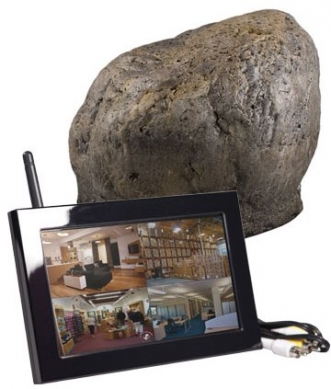
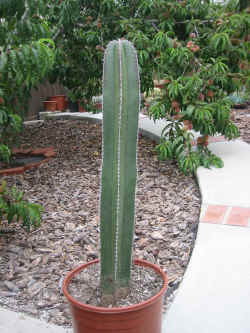
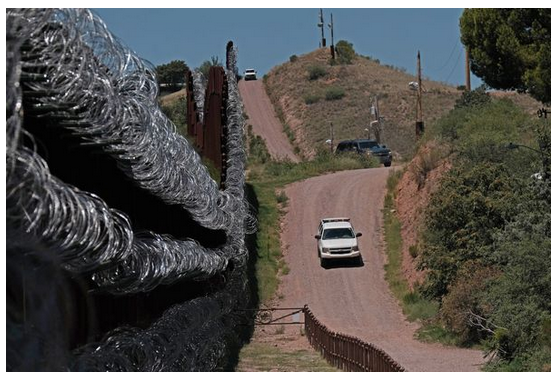

Leave a Reply
You must be logged in to post a comment.